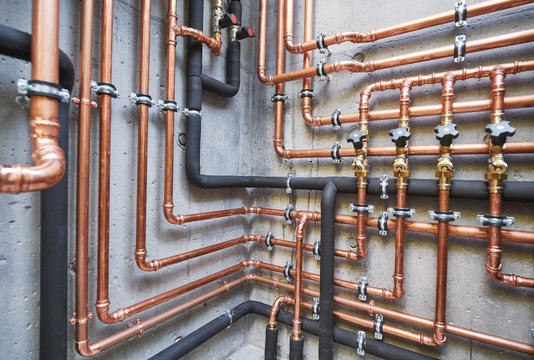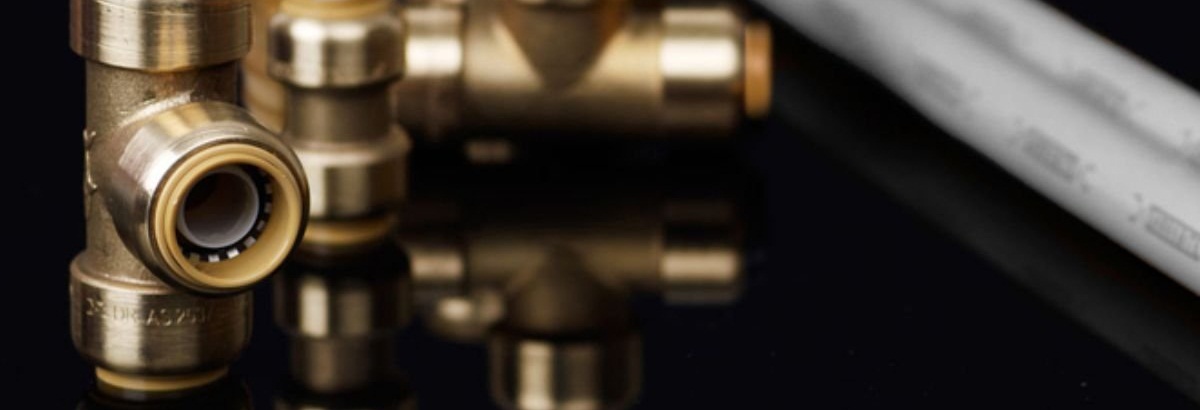An Overview to Your House's Plumbing System Anatomy
An Overview to Your House's Plumbing System Anatomy
Blog Article
We have come across this great article pertaining to Exploring Your Homes Plumbing Anatomy listed below on the web and thought it made perfect sense to write about it with you on my blog.

Understanding how your home's pipes system functions is important for every house owner. From delivering clean water for alcohol consumption, food preparation, and showering to safely removing wastewater, a well-kept pipes system is essential for your household's wellness and convenience. In this comprehensive guide, we'll explore the elaborate network that composes your home's pipes and offer suggestions on upkeep, upgrades, and taking care of usual concerns.
Introduction
Your home's plumbing system is greater than simply a network of pipes; it's an intricate system that guarantees you have access to tidy water and reliable wastewater elimination. Understanding its elements and exactly how they collaborate can assist you avoid pricey fixings and make certain every little thing runs efficiently.
Fundamental Parts of a Plumbing System
Pipes and Tubing
At the heart of your pipes system are the pipelines and tubes that bring water throughout your home. These can be made from different products such as copper, PVC, or PEX, each with its benefits in regards to longevity and cost-effectiveness.
Components: Sinks, Toilets, Showers, and so on.
Components like sinks, commodes, showers, and bath tubs are where water is made use of in your house. Recognizing just how these components attach to the pipes system assists in identifying issues and preparing upgrades.
Shutoffs and Shut-off Points
Valves manage the flow of water in your plumbing system. Shut-off valves are essential during emergency situations or when you need to make repairs, permitting you to separate parts of the system without interrupting water circulation to the entire house.
Water System
Main Water Line
The main water line attaches your home to the local supply of water or a private well. It's where water enters your home and is dispersed to different components.
Water Meter and Pressure Regulatory Authority
The water meter steps your water use, while a pressure regulatory authority makes sure that water moves at a risk-free pressure throughout your home's pipes system, avoiding damages to pipelines and fixtures.
Cold Water vs. Warm water Lines
Understanding the difference between cold water lines, which provide water directly from the main, and warm water lines, which carry warmed water from the water heater, aids in repairing and preparing for upgrades.
Drainage System
Drain Pipes Water Lines and Traps
Drain pipes carry wastewater far from sinks, showers, and commodes to the drain or septic tank. Catches prevent drain gases from entering your home and also catch debris that could trigger clogs.
Ventilation Pipelines
Ventilation pipelines allow air right into the drainage system, preventing suction that might reduce drain and cause traps to empty. Correct ventilation is essential for keeping the integrity of your pipes system.
Significance of Proper Water Drainage
Guaranteeing appropriate drainage protects against back-ups and water damage. On a regular basis cleaning up drains pipes and preserving catches can prevent expensive repairs and expand the life of your pipes system.
Water Heating Unit
Kinds Of Hot Water Heater
Hot water heater can be tankless or conventional tank-style. Tankless heating units warmth water on demand, while storage tanks save heated water for immediate usage.
Just How Water Heaters Connect to the Plumbing System
Comprehending just how hot water heater attach to both the cold water supply and hot water circulation lines helps in identifying concerns like insufficient warm water or leakages.
Maintenance Tips for Water Heaters
Consistently flushing your hot water heater to get rid of debris, inspecting the temperature level settings, and examining for leakages can extend its life expectancy and boost energy effectiveness.
Usual Plumbing Problems
Leakages and Their Causes
Leaks can happen as a result of maturing pipes, loosened installations, or high water pressure. Dealing with leakages promptly prevents water damage and mold growth.
Clogs and Blockages
Blockages in drains pipes and toilets are typically triggered by flushing non-flushable products or an accumulation of oil and hair. Making use of drain displays and bearing in mind what drops your drains pipes can stop blockages.
Indications of Plumbing Issues to Expect
Low tide pressure, slow drains, foul odors, or unusually high water bills are indications of prospective pipes troubles that should be addressed quickly.
Plumbing Maintenance Tips
Routine Assessments and Checks
Arrange annual pipes examinations to capture problems early. Look for indicators of leaks, corrosion, or mineral buildup in faucets and showerheads.
DIY Maintenance Tasks
Simple tasks like cleaning faucet aerators, checking for toilet leakages making use of color tablets, or insulating revealed pipelines in cold climates can protect against significant plumbing issues.
When to Call an Expert Plumbing Technician
Know when a plumbing problem needs professional competence. Attempting complicated repair work without correct expertise can result in more damages and higher repair prices.
Updating Your Pipes System
Reasons for Upgrading
Upgrading to water-efficient components or changing old pipelines can enhance water top quality, decrease water bills, and raise the value of your home.
Modern Plumbing Technologies and Their Advantages
Discover innovations like clever leak detectors, water-saving toilets, and energy-efficient hot water heater that can save cash and decrease environmental effect.
Cost Considerations and ROI
Compute the in advance costs versus long-lasting cost savings when taking into consideration plumbing upgrades. Lots of upgrades spend for themselves with lowered utility costs and fewer fixings.
Environmental Influence and Conservation
Water-Saving Fixtures and Devices
Setting up low-flow faucets, showerheads, and commodes can substantially minimize water usage without giving up performance.
Tips for Reducing Water Use
Easy habits like dealing with leaks immediately, taking shorter showers, and running complete loads of washing and dishes can preserve water and lower your energy expenses.
Eco-Friendly Pipes Options
Think about lasting plumbing products like bamboo for flooring, which is durable and eco-friendly, or recycled glass for counter tops.
Emergency Readiness
Steps to Take Throughout a Pipes Emergency
Know where your shut-off shutoffs are located and just how to turn off the water in case of a burst pipe or significant leak.
Value of Having Emergency Situation Calls Handy
Keep call details for neighborhood plumbers or emergency solutions readily offered for quick reaction throughout a plumbing situation.
DIY Emergency Situation Fixes (When Relevant).
Short-term solutions like using duct tape to spot a leaking pipe or putting a pail under a trickling faucet can reduce damages till an expert plumber arrives.
Final thought.
Comprehending the anatomy of your home's plumbing system encourages you to keep it properly, conserving money and time on repair services. By following normal maintenance regimens and remaining notified concerning contemporary pipes modern technologies, you can guarantee your pipes system operates efficiently for many years to find.
Exploring Your Homes Plumbing Anatomy
Water Supply System
Main Water Line: This is where water enters your home from the municipal supply or a private well.
Water Meter: Typically located near where the main water line enters the property, it measures the amount of water used.
Shutoff Valve: It s crucial to know where this is in case of emergencies. It allows you to turn off the water supply to the entire house.
Pipes and Fittings: These distribute water throughout your home. Materials can include copper, PVC, or PEX.
Drain-Waste-Vent (DWV) System
Drains: Located in sinks, showers, and tubs, these carry wastewater away.
Traps: U-shaped pipes under sinks that hold standing water, blocking sewer gases from entering the home.
Vents: Pipes that lead from the DWV system to the outside, preventing vacuum formation and allowing gases to escape.
Sewer Line: Carries all wastewater from the home to the municipal sewer system or a septic tank.
Fixtures and Appliances
Sinks, Toilets, and Showers
Dishwashers and Washing Machines
Water Heaters
Maintenance Tips
Regularly check for leaks in exposed pipes and around fixtures.
Inspect the water heater annually for signs of wear.
Clean drains and traps to prevent clogs and odors.
Know how to shut off water to individual fixtures.
When to Call a Professional
Major leaks or burst pipes
Installation of new pipes or fixtures
Septic tank issues
Remodeling projects that involve plumbing changes
Conclusion
Understanding the anatomy of your home's plumbing is key to maintaining a functional and efficient system. Regular checks and knowing when to call in the experts can save you time, money, and stress.
https://www.mavyn.com/blog/exploring-your-homes-plumbing-anatomy

Exploring Your Homes Plumbing Anatomy
Water Supply System
Drain-Waste-Vent (DWV) System
Fixtures and Appliances
Maintenance Tips
When to Call a Professional
Conclusion
Understanding the anatomy of your home's plumbing is key to maintaining a functional and efficient system. Regular checks and knowing when to call in the experts can save you time, money, and stress.
https://www.mavyn.com/blog/exploring-your-homes-plumbing-anatomy
Hopefully you enjoyed our excerpt about Exploring Your Homes Plumbing Anatomy. Many thanks for spending some time to read through our piece. Sharing is caring. Helping people is fun. Thanks so much for taking the time to read it.
Click Here Report this page